Introduction to Landing Pages
Have you ever stumbled upon a website that just “clicked” in your mind? That’s no accident – it’s the result of a well-designed landing page.
A landing page, also known as a destination page, plays a crucial role in the world of online marketing. It is often the first point of contact for potential clients. When crafted effectively, it not only grabs attention but also guides users toward taking action, aiming to achieve a specific goal.
In this article, we’ll present 7 key elements of an effective landing page to help you boost conversions and build trust among visitors. If you want your page to stand out from the crowd, read on!
What Is a Landing Page
A landing page is a standalone web page created with a specific purpose. It usually appears to users after clicking on an ad or a sponsored link. With its simple structure, a landing page works exceptionally well for one-time marketing actions and promotions.
The goal of a landing page is to persuade users to take a specific action, such as filling out a form or downloading a resource. To increase its effectiveness, it’s essential to remove unnecessary elements, speeding up page loading and improving conversion rates.
The core of a landing page’s success lies in its design, content, and strategy. These elements work together to deliver a higher return on investment.
Key Elements of a Landing Page
- Simple Design
Keep it clean and visually appealing to avoid overwhelming users. - Focus on One Action
Each landing page should direct users toward a single, clear goal. - Fast Loading
Pages that load faster perform better in retaining users.
To meet users’ needs, consider using tools like Google Analytics to analyze results and optimize the page for different target groups. Marketing automation and integrations with other channels, such as Google Ads, can further support your campaigns.
Defining Your Goal: What Do You Want to Achieve?
Creating a landing page begins with a clearly defined goal. Do you want to increase sales, collect leads, or build brand awareness? A specific goal helps align all page elements to support its achievement.
Why is this important?
- User Focus: A good landing page centers around one action, preventing distractions.
- Conversions: A clear goal makes it easier for users to convert, e.g., via a form.
- Optimization: Allows precise measurement of campaign performance using tools like Google Analytics.
Key Elements:
- Call to Action (CTA): Guides potential customers toward desired actions, such as making a purchase or signing up for a newsletter.
- Social Proof: Builds trust by showcasing satisfied customer reviews.
- Brand Consistency: Align the page’s aesthetics with your brand to ensure consistency across your online presence.
An Engaging Headline: The Key to Capturing Interest
The headline on a landing page is a true magnet for visitors’ attention. It creates the first impression and is crucial to the effectiveness of the entire page. Ensure it clearly and precisely highlights the value of your offer to instantly intrigue potential clients.
A Good Headline:
- Highlights Value: Clearly shows what the user will gain.
- Aligns with Campaign Goals: Matches specific marketing objectives, boosting conversion chances.
- Showcases Unique Selling Points (USP): Emphasizes what sets your offer apart from competitors.
The headline doesn’t just grab attention but also encourages further exploration of the content. This is vital in marketing campaigns, where every word can make or break success.
A Compelling CTA: Encouraging Action
Creating an effective landing page is challenging, and the Call-to-Action (CTA) plays a pivotal role. CTA is the element that persuades users to take a specific action, which is essential for conversion. But how do you craft an impactful CTA?
Features of an Effective CTA:
- Simplicity: Use concise phrases (1–4 words) for a clear message.
- Clarity: The user should know exactly what will happen upon clicking.
- First-Person Form: Increases engagement, e.g., “Sign me up.”
- Benefits-Oriented: Addresses the needs and benefits for the potential client.
Place the CTA prominently on your page to ensure it fulfills its purpose even in fast-paced campaigns. Ready to enhance your new landing page?
Visual Appeal: How Aesthetics Impact Users
Aesthetics are a key element in creating an effective landing page. Visual components attract the attention of potential customers, making communication more impactful.
How Aesthetics Influence Users:
- Ease of Reading: Graphics break up large text blocks, making content more accessible.
- Brand Consistency: All visual elements should align with your brand’s style to maintain a cohesive image.
- Multimedia: Short videos or on-brand images enhance professionalism.
- Increased Conversion Rates: Consistent and attractive design draws attention and improves conversion chances.
Remember, a visually appealing page must also be functional. A good landing page combines aesthetics and usability to achieve campaign goals.
Responsiveness: Optimizing for Mobile Devices
Today, mobile devices account for nearly 55% of internet users in Poland. Optimizing landing pages for smartphones and tablets is essential. Mobile-friendly design not only enhances user experience but also increases conversion potential.
Key Aspects:
- Loading Speed: Pages that load just two seconds slower can increase bounce rates by 103%. Fast loading is critical.
- Proper Display: Ensure the page looks good on all screen sizes. Fix display issues before launching your campaign.
Responsive and fast-loading designs cater to mobile users, encouraging them to convert rather than abandon the page.
Social Proof: Building Trust Among Visitors
Social proof is a key element of an effective landing page. It persuades users to take action by showcasing others’ positive experiences. As many as 7 out of 10 consumers rely on online reviews before making a purchase, emphasizing their importance in decision-making.
How to Boost Credibility on a Landing Page:
- Customer Reviews: Display ratings and testimonials to demonstrate the value of your product.
- Success Stories: Share specific examples of users who succeeded with your offer.
- Testimonials: Use quotes from happy clients to build trust with potential customers.
The more social proof you include, the higher the chances of visitors converting.
Content Optimization: How to Boost Conversions
Optimizing a landing page is key to maximizing conversions and engaging users.
Proven Strategies:
- Simplified Layout: Make it easy for potential customers to find what they need quickly.
- A/B Testing: Test different elements to identify what works best.
- Visual Appeal: Replace some text with images or videos to make the page more engaging.
- Consistent Headlines: Ensure headlines match ad content for seamless user experience.
- Consumer Psychology: Experiment with colors and phrases to find what resonates with your audience.
Summary and Next Steps
Creating an effective landing page is not just about attractive design but also defining a clear goal. Focus on generating conversions through thoughtful CTAs and optimized elements.
Simple Steps to Success:
- Define Your Goal: Determine whether your page promotes a product, gathers contact information, or encourages downloads.
- Optimize Content: Ensure concise, audience-targeted content.
- Test and Implement: Continuously optimize for mobile and loading speed.
- Track Performance: Use tools like Google Analytics to monitor results and refine your strategy.
Remember, a great landing page requires continuous improvement to meet changing customer needs and market trends.






